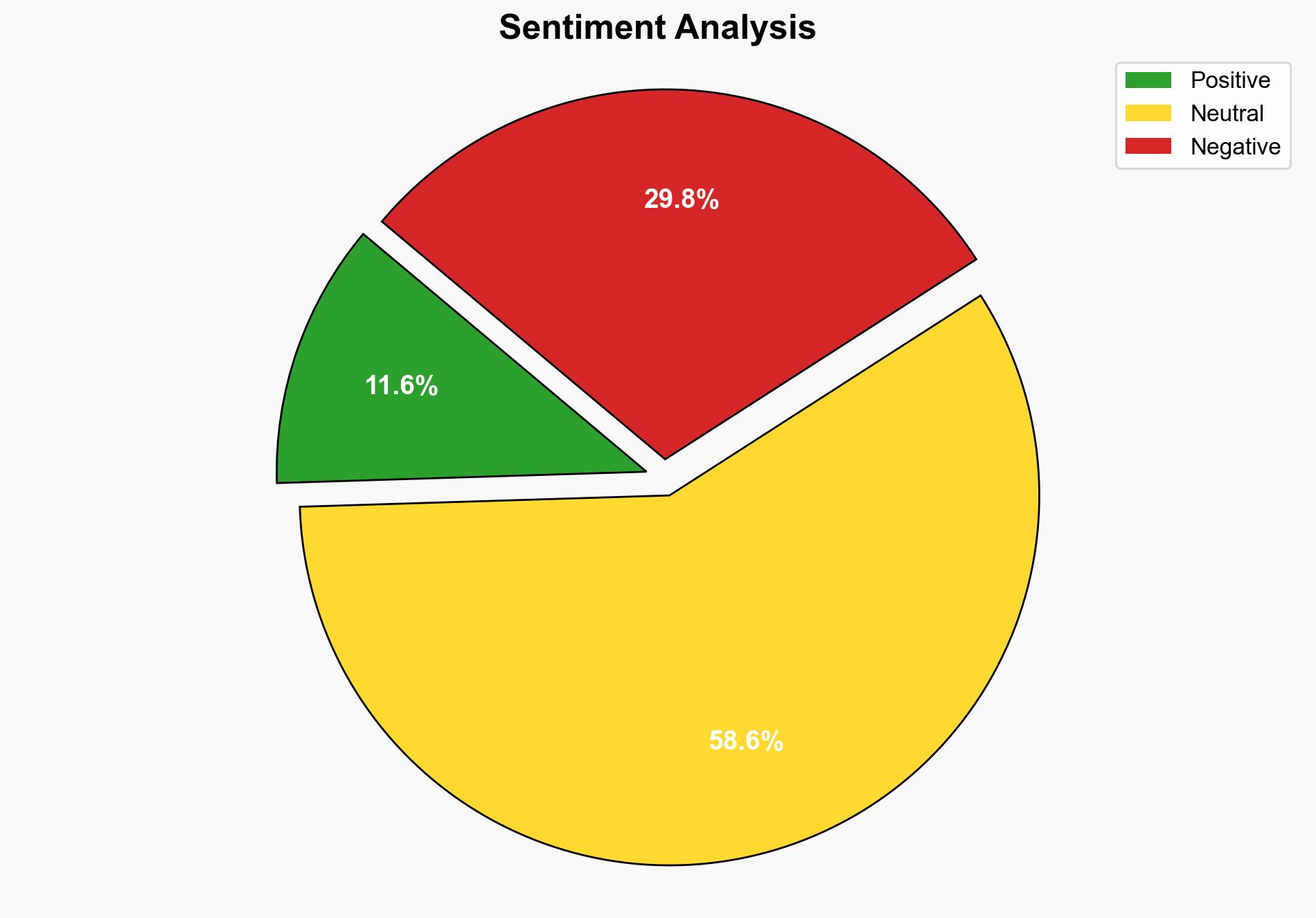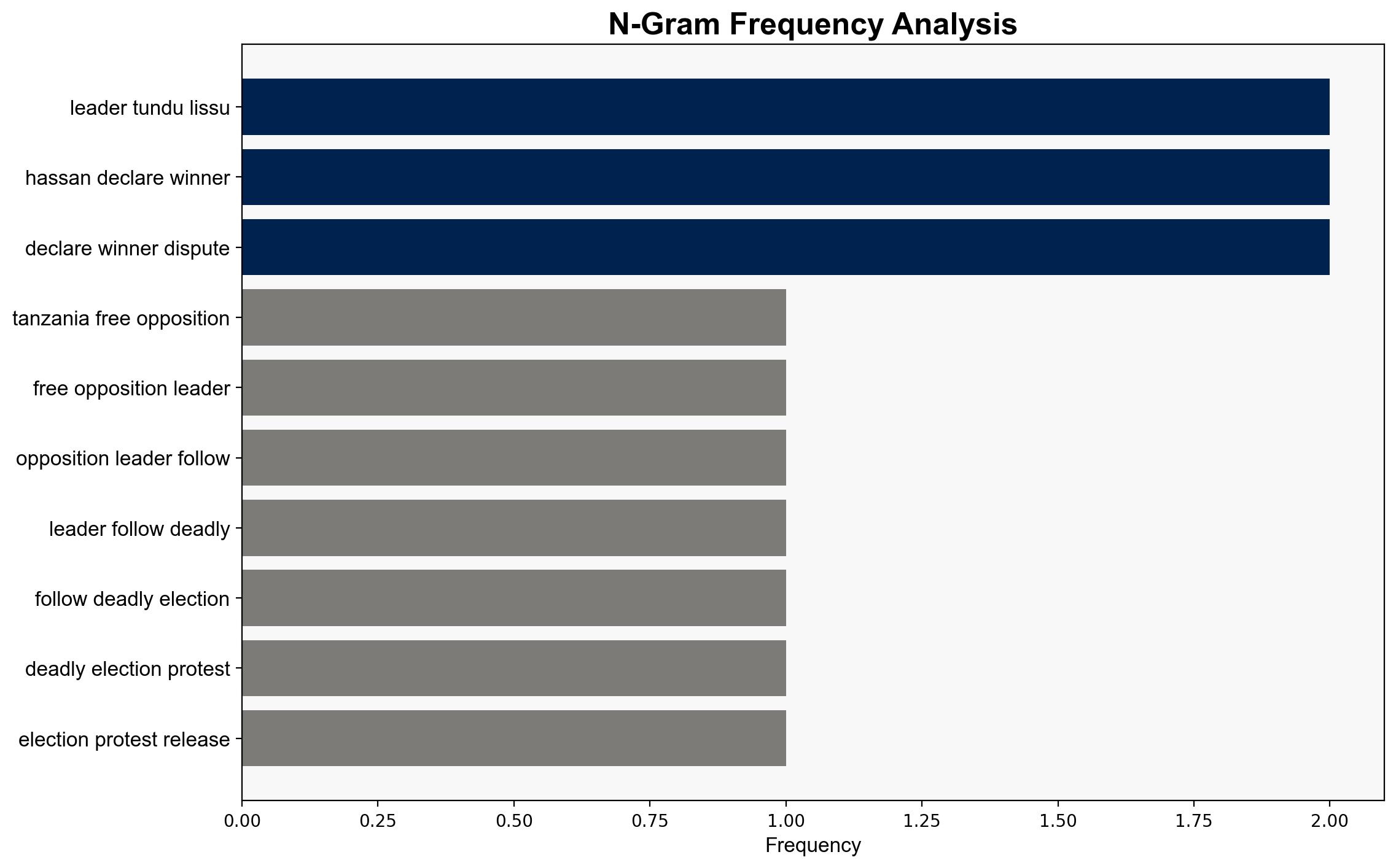Tanzania frees opposition leaders following deadly election protests – Al Jazeera English
Published on: 2025-11-11
AI-powered OSINT brief from verified open sources. Automated NLP signal extraction with human verification. See our Methodology and Why WorldWideWatchers.
Intelligence Report: Tanzania frees opposition leaders following deadly election protests – Al Jazeera English
1. BLUF (Bottom Line Up Front)
With moderate confidence, it is assessed that the release of opposition leaders in Tanzania is a strategic move by the government to alleviate international pressure and domestic unrest following disputed elections. The most supported hypothesis is that the government aims to stabilize the political climate while maintaining control over dissent. Recommended action includes monitoring the political environment for signs of further unrest and engaging with regional partners to promote dialogue and democratic reforms.
2. Competing Hypotheses
Hypothesis 1: The Tanzanian government released opposition leaders to reduce international criticism and domestic unrest, thereby stabilizing the political environment.
Hypothesis 2: The release is a tactical maneuver to placate opposition forces temporarily while preparing for a more significant crackdown on dissent.
Hypothesis 1 is more likely, given the immediate need to address international and domestic pressures. However, Hypothesis 2 cannot be entirely dismissed due to the history of political suppression in Tanzania.
3. Key Assumptions and Red Flags
Assumptions: It is assumed that the government’s primary goal is to maintain stability and international legitimacy. The opposition’s release is genuinely intended to ease tensions.
Red Flags: Continued reports of abductions or arrests of opposition figures would indicate a shift towards Hypothesis 2. Increased military or police presence in opposition strongholds could signal preparation for further crackdowns.
Deception Indicators: Government statements minimizing unrest or casualties without independent verification could be misleading.
4. Implications and Strategic Risks
The release of opposition leaders may temporarily ease tensions but risks remain high for political instability if underlying grievances are not addressed. Potential escalation scenarios include renewed protests, international sanctions, or increased authoritarian measures by the government. Cyber and informational threats may also rise as both government and opposition seek to control narratives.
5. Recommendations and Outlook
- Encourage diplomatic engagement with Tanzanian authorities to promote dialogue and democratic reforms.
- Monitor human rights developments and prepare for potential humanitarian interventions if violence escalates.
- Best-case scenario: Successful dialogue leads to political reforms and stabilization.
- Worst-case scenario: Renewed violence and international isolation due to government crackdowns.
- Most-likely scenario: Continued tension with intermittent unrest and international scrutiny.
6. Key Individuals and Entities
Tundu Lissu, John Heche, Amani Golugwa, Godbless Lema, Boniface Jacob, President Samia Suluhu Hassan, Archbishop Jude Thaddaeus Ruwaichi.
7. Thematic Tags
National Security Threats
Structured Analytic Techniques Applied
- Cognitive Bias Stress Test: Expose and correct potential biases in assessments through red-teaming and structured challenge.
- Bayesian Scenario Modeling: Use probabilistic forecasting for conflict trajectories or escalation likelihood.
- Network Influence Mapping: Map relationships between state and non-state actors for impact estimation.
Explore more:
National Security Threats Briefs ·
Daily Summary ·
Methodology





